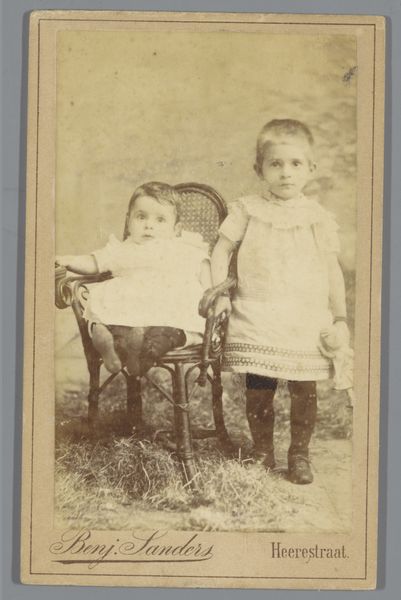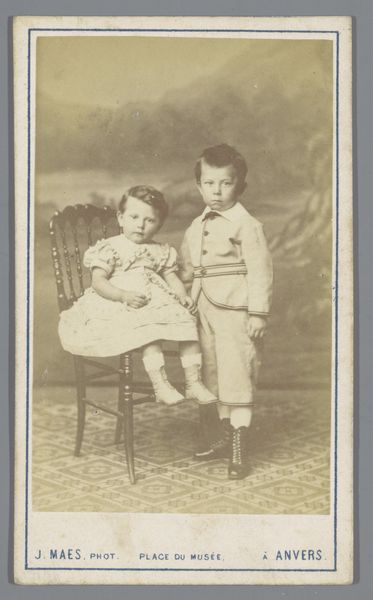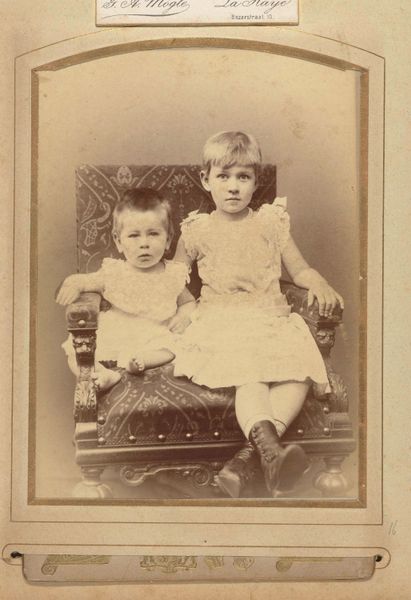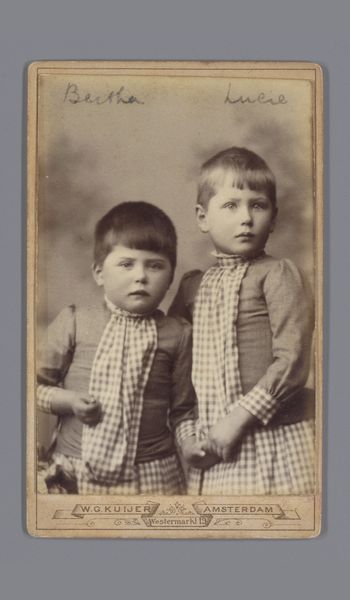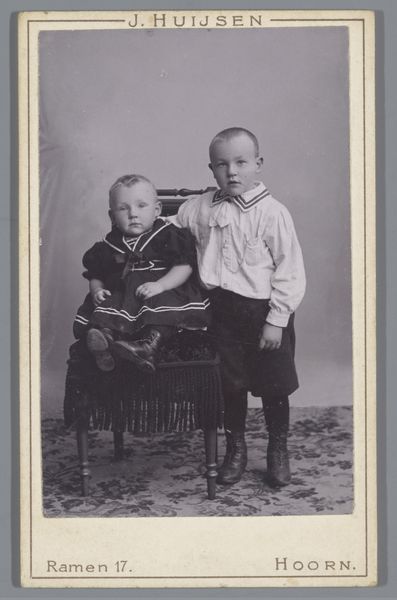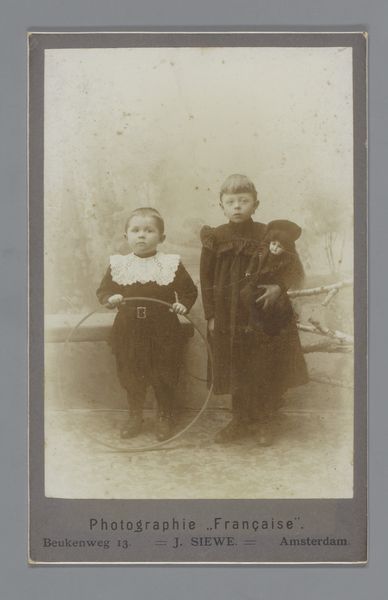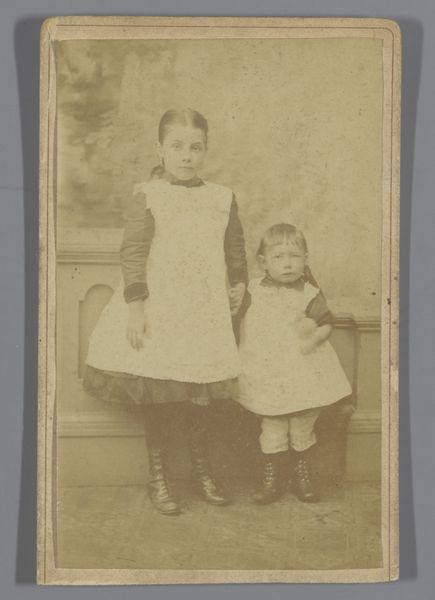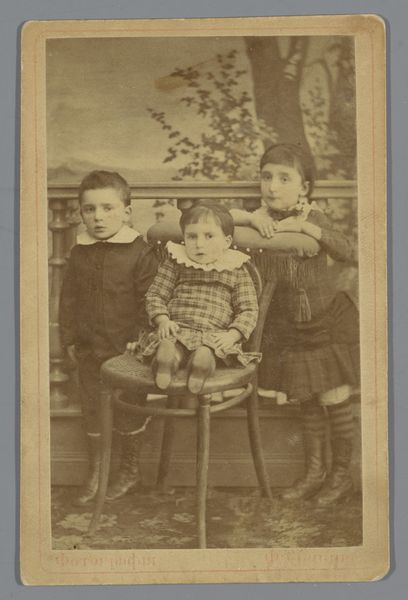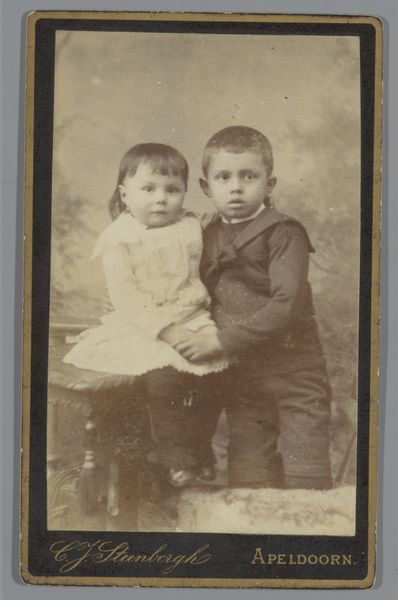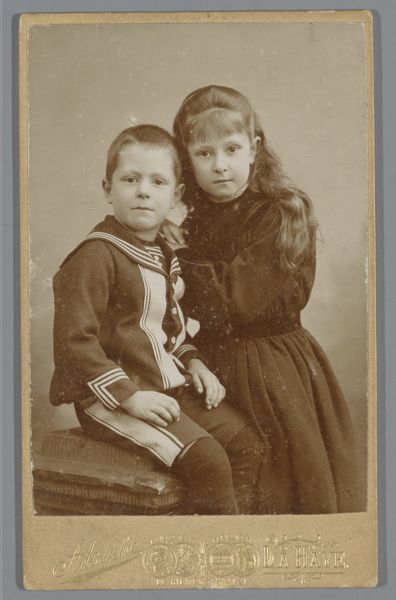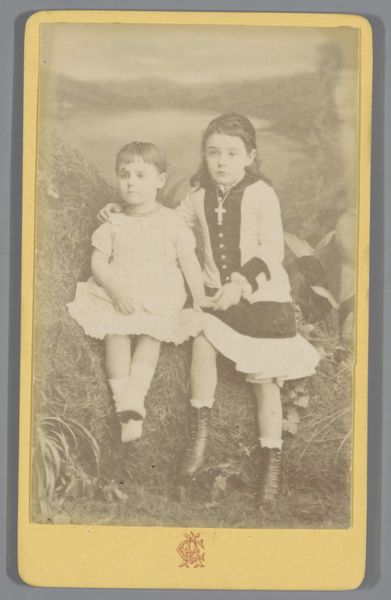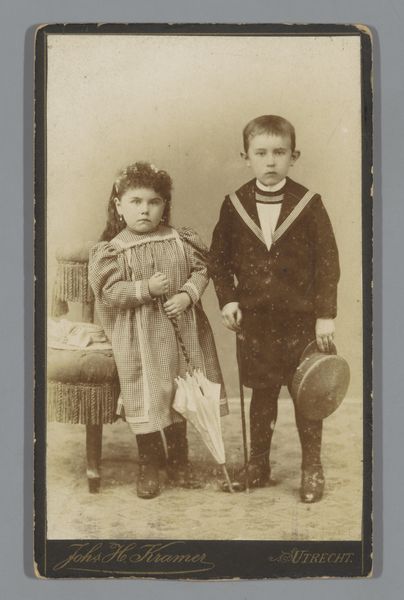
photography, photomontage
#
portrait
#
photography
#
framed image
#
photomontage
#
genre-painting
Dimensions: height 105 mm, width 63 mm
Copyright: Rijks Museum: Open Domain
Curator: Look at the serious expressions on these children. Editor: Indeed, a formal almost somber mood permeates the image. It is a bit eerie! Curator: This is a photographic portrait of two unknown children taken sometime between 1880 and 1920. The photograph is attributed to Photographie De Concurrent in Amsterdam. Note the props-- a table resting on smaller ornamental tables on which they pose. The final product is a photomontage of a staged photograph meant to portray an upscale ambiance. Editor: It’s fascinating how this image participates in the larger history of portraiture, even photographic portraiture. During the late 19th and early 20th centuries, portraits served as important social markers. Commissioning a photograph, like this one, spoke volumes about class and aspirations, documenting not just appearance but the sitter's role and status. The studio imprints and stylized staging was crucial in marketing portraiture to larger audiences. Curator: I’m intrigued by the actual processes involved in creating such portraits during this era. The chemical processes alone, the selection and manipulation of materials…It speaks volumes about labor! Consider the studio assistant who arranged those props; it shows the means of constructing an image intended for specific circulation and consumption among its contemporary viewers. Editor: Absolutely. And if we consider the setting, “Photographie De Concurrent” located on a street in Amsterdam--how might this urban context have shaped their artistic practice? It reflects Amsterdam's expanding mercantile class eager to participate in displaying its prosperity through commissioning such images. Curator: Right. And you cannot ignore the socio-economic implications! Think about it, what materials did the studio use? From photographic paper and the dyes needed for coloration processes to furnishings chosen specifically as “props", to the very clothing of the children, we begin to unpack the material world surrounding the work. The labor behind it, which allowed a wide array of society to access and participate in modernism. Editor: By tracing the photograph through social history, and engaging with the material reality through the labour it documents we see it participates in a wider historical, visual and socio-economical practice of 19th Century Amsterdam. It all gives an interesting depth to this poignant little moment in time! Curator: I agree. The blending of artistic craft and burgeoning consumer culture makes this more than just a photograph!
Comments
No comments
Be the first to comment and join the conversation on the ultimate creative platform.
